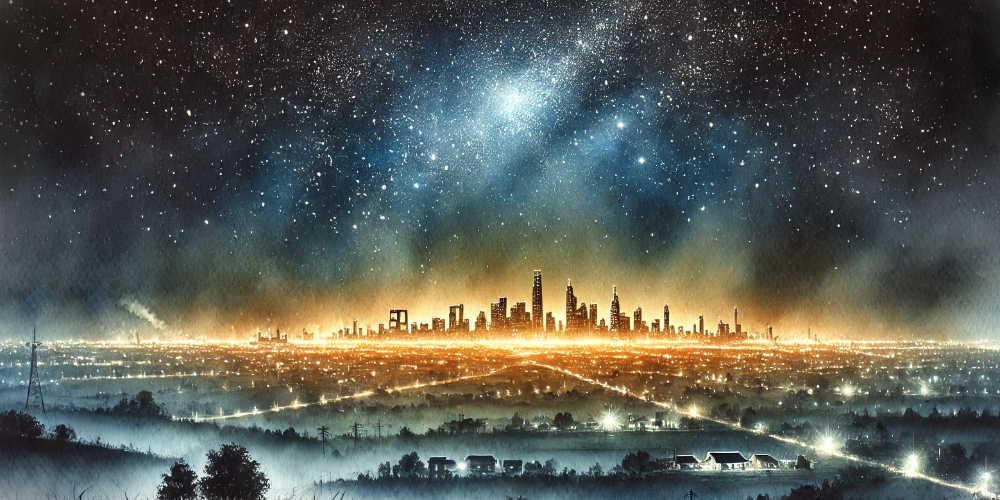 Measuring Sky Darkness Measuring Sky Darkness |
 |
Imagine viewing a night sky so dark that the glow of the Milky Way Galaxy is bright enough to cast your shadow onto the ground. Imagine seeing the glow of the distant Andromeda Galaxy spanning several degrees across the sky, not using a telescope, but naked-eye.
Have you ever experienced a sky as dark as this? If so, then you know what it is like to be starstruck — it can be a moving and unforgettable experience.
Of course, most people have never experienced such a nightscape since light pollution is an endemic problem. The best stargazing typically means traveling to another location far from the lights of a city.
To help understand the sky darkness of different locations, stargazers use a 9-level classification system ranging from no light pollution to extreme light pollution. It’s called the Bortle Scale and here’s how it works:
| Bortle Class |
Sky Description |
What You Can See |
| 1 - Excellent Dark Sky |
No light pollution at all, Milky Way casts shadows.
| Constellations barely recognizable due to so many stars, many DSOs (deep space objects) easily visible, Triangulum Galaxy (M33) easy naked-eye target. |
| 2- Typical Dark Sky |
No light pollution even from distant cities, Milky Way bright.
| Like Bortle 1 just not quite as bright. |
| 3 - Rural Sky |
Some light domes visible from distant cities.
| Milky Way still prominent, Triangulum Galaxy (M33) visible only with averted vision. |
| 4 - Suburban-Rural Transition |
Skyglow noticeable, multiple light domes, Milky Way dimmer.
| Triangulum Galaxy difficult to see, Andromeda Galaxy less distinct, some DSOs visible but faint. |
| 5 - Suburban Sky |
Skyglow dominates, Milky Way barely visible.
| Andromeda Galaxy visible but faint, Beehive Cluster (M44) visible. |
| 6 - Bright Suburban Sky |
Skyglow bright, Milky Way not visible.
| Only the brightest DSOs visible (i.e. Orion Nebula, Pleiades) |
| 7 - Suburban-Urban Transition |
Entire sky affected by light pollution.
| Only major constellations visible, Andromeda Galaxy is faint in binoculars. |
| 8 - City Sky |
Very bright light pollution, no DSOs visible.
| Moon, some planets and some stars visible. |
| 9 - Inner-City Sky |
Extreme light pollution.
| Moon, some planets, and few stars visible.
|
Finding a dark sky site to view from makes a huge difference for successful stargazing. As much as possible, try to view from Bortle 1-3 skies.
To find the level of light pollution where you live and for help in finding an even better location, check out Light Pollution Map. Click a location on the map to learn its Bortle Class.
|
|



